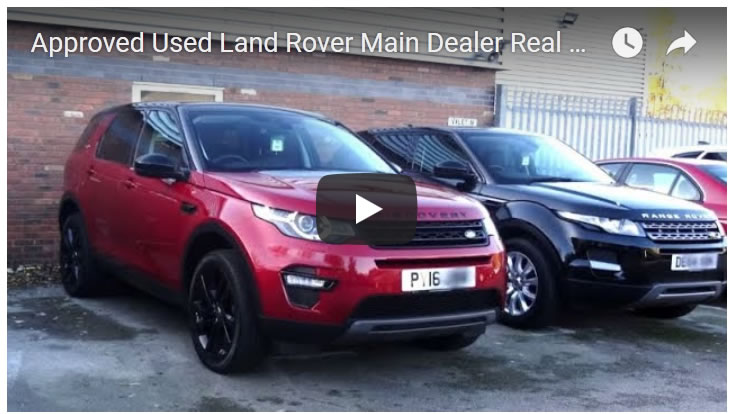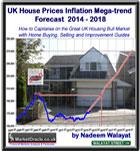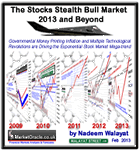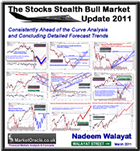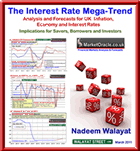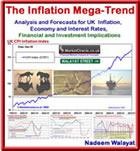Best Time / Month of Year to BUY a USED Car is DECEMBER, UK Analysis
Personal_Finance / Motoring Dec 13, 2017 - 08:20 AM GMTBy: Nadeem_Walayat
 A google search soon reveals that the consensus view of the best times of year to buy a used car in the UK tend to coalesce around the two plate changes of the year, i.e. 1st of March and 1st September as being the most commonly propagated online advice to buy just before and after the plate changes. Next often repeated are the dealers end of quarter sales targets for bonuses and other perks, namely by the end of March, June, Sept and December. And also often mentioned are expectations that the best used car deals tend to be in the winter months due to less consumer demand.
A google search soon reveals that the consensus view of the best times of year to buy a used car in the UK tend to coalesce around the two plate changes of the year, i.e. 1st of March and 1st September as being the most commonly propagated online advice to buy just before and after the plate changes. Next often repeated are the dealers end of quarter sales targets for bonuses and other perks, namely by the end of March, June, Sept and December. And also often mentioned are expectations that the best used car deals tend to be in the winter months due to less consumer demand.
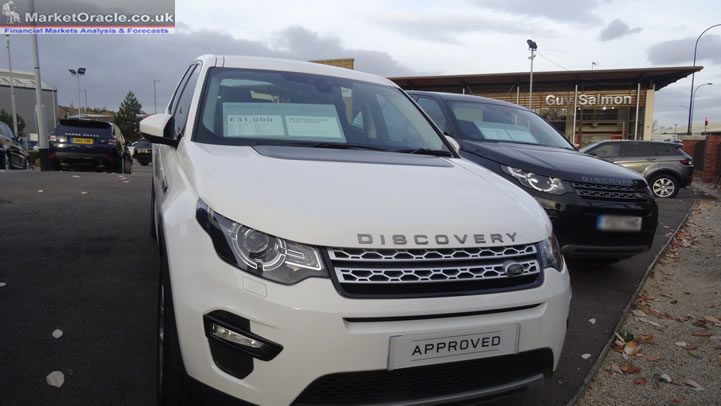
So for 2017 I undertook a comprehensive analysis of Britain's used car market (<3 years age) which involved tracking the prices of individual car's of how they changed in price as they remained on the market until sold. Which by early December totaled more than 400 vehicles as I attempted to ascertain the trends in used car prices as set against the average prices for the year so as to come to a conclusion of when are the best months of the year to buy a used car in the UK and which months to avoid.
Given the size and scope of Britain's used car market, then the following key conditions further refined the range of the car's I would track.
1. All cars were less than 3 years of age (from date of first registration), so still under manufacturer warranty, with 80% of cars in the 1-2 year age range.
2. The used car price range tracked was between £18k to £40k, as I soon realised that lower priced cars tended to exhibit far greater price volatility, i.e. dealer profit margins tend to be a greater component of the lower priced used cars. Therefore I focused my research on the mid to upper range of the used car market such as tracking the Nissan X-Trail, Volvo XC60 , Honda Civic, BMW 7, Audi A6, Merc C, and the Land Rover Discovery Sport amongst others.
3. To determine average prices for each year the usual considerations when buying a car were weighted for such as the age in months, mileage, trim level, and any factory fitted options.
As for the sources of data, of all the used car market sites out there by far the most useful was cargurus.co.uk, as unlike all other sites Cargurus includes data on the length of time each car has been on the market as well as a trend graph for every price change. Which made the tracking of hundreds of used cars much easier than it would otherwise have been as the following illustrates:
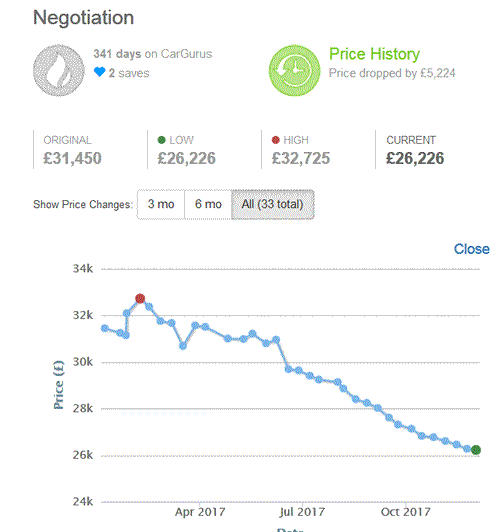
The next most useful site was Motors.co.uk as it has large volume of cars on sale, and then pistonheads.co.uk and finally autotrader.co.uk which has dropped a long way from its market leader position of a decade ago. I also periodically searched and tracked cars at large dealerships such as Motorpoint and Evans Halshaw as I noticed that many of their cars don't tend to get listed on the usual car selling sites or if they were, tend to be listed for a short period of time rather than permanently until sold.
The net result of all of this analysis is a spread sheet that runs to more than 3500 rows of analysis on more than 400 individual cars as each observed price change was logged.
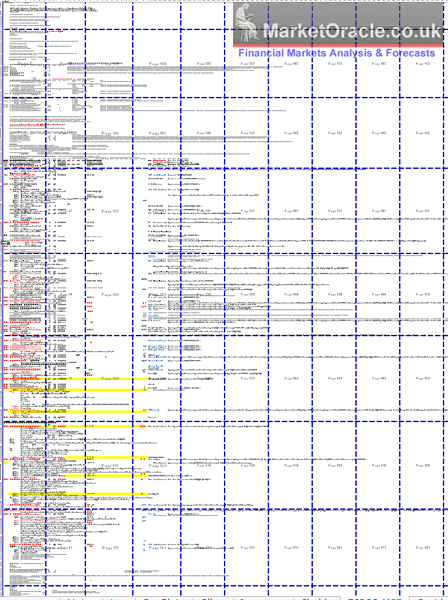
At the end of the process the data was converted into the following graph that illustrates the Discount or Premium Price to the average for the year for the same make, model, similar age and mileage, with trim levels also being taken into account.
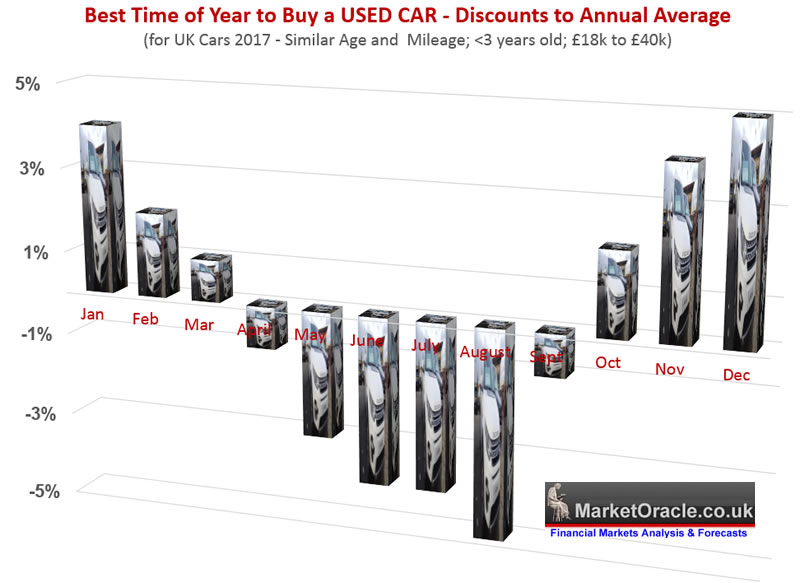
The key conclusions of this research are:
1. The BEST DISCOUNTS to the annual average are obtained from Mid November to the End of January with DECEMBER being the BEST MONTH of the year at on average 5% discount to the annual average! Which basically means you are reading this article at probably the very best time of the year to buy a USED car in the UK.
2. THE WORST TIME to buy a used car in the UK are during the SUMMER MONTHS, That's from the Beginning of MAY into End of AUGUST. As this is when most people are likely looking to buy a newish used car so as to enjoy traveling during the summer months.
3. MARCH PLATE CHANGE. It is better to buy a used car in February than in March, whilst the consensus view is that it is better to buy AFTER the plate change as supposedly the dealers are awash with used cars brought in as p/x. However the March 1st plate change also goes along with extensive new cars advertising and marketing campaigns that ignite car buying interest right across the car market for the next 6 months.
4. SEPTEMBER PLATE CHANGE. Again contrary to the consensus view, buying in August just before the September plate change is probably the WORST MONTH of the year to buy a used car, when one is likely to pay an average extra 5%! Whilst in September 1% extra.
Therefore the consensus view of the plate changes being the best times of the year to buy a used car brought in for a p/x for a new car appears to be just a marketing gimmick.
5. END of QUARTERS - The consensus is that car salesmen have quarterly targets to achieve and thus the best bargains can be achieved at the end of each quarter. However in terms of the starting price before any successful discount negotiations then the March and September end of quarters tend to be just average months in terms of forecourt prices. Whilst June is one of the worst months of the year. Only December, the end of the year stands out as being THE End of Quarter to maximise buying bargains. So it appears that if the consensus was once true, then it is no longer the case now as it should be obvious that the car dealers have already worked out decades ago that car buyers think their going to get a bargain at the end of each quarter when the reality is the cars are such priced that its just not going to happen!
And finally remember that the graph presents the AVERAGE DISCOUNT OR PREMIUM. Which means that there will always be cars that are OVER PRICED and UNDER PRICED, which means that if one does their research and works hard enough then a discount of as much as 15% THIS month against the annual average is achievable! And of course one can pick up a bargain at anytime of the year, especially if one is an expert negotiator, though I doubt there are many who can out negotiate a car salesman! It's just that November to January place the Buyer at an starting advantage, which means even if one never gets the dealer to drop the forecourt price by a single penny, they can still secure a good deal. Whilst during the summer months one may find the dealer drops the price by several thousands, well that's because the car could be significantly OVER PRICED by as much 15%! So yes, the dealer can drop the price by a few percent so as to give the buyer the impression of having achieved a good deal.
Again understand this, you are NOT going to OUT NEGOTIATE a CAR SALES MAN who does this EVERY DAY for a LIVING! The ONLY advantage you have is in knowing WHEN are the BEST months / times of the year to buy a used car which is basically NOW!
Buying a Land Rover Discovery Sport HSE Black
I recently put my money where my mouth is, after all that is the primary purpose for virtually all of my analysis. So I tracked and then bought a 15 month old Land Rover Discovery Sport HSE Black with 13k miles on the clock for £30,950, set against the current Mid December average of £33k, which given the fact that I'm a crap negotiator isn't too bad a price to pay for the model and spec. Whilst 5 months ago the same age / spec / mileage would be selling for an average of about £36k.
And here's the video of what a 'real' customer can expect when buying from a main Land Rover dealer (Hunters) during the winter months. Starting from as soon as one drives onto the dealerships forecourt, test driving, documentation, part exchanging, paperwork, insuring, taxing and payment, all the way to when one drives off with their new used car a few hours later i.e. the 'REAL' experience of what to expect over the usual 'approved used' sales pitch.
Whilst in the first video in this series I literally traveled the distance (2.5 hours) to the main land rover dealership situated in Chester (Hunters).
Remember to subscribe to our youtube channel for new videos in this series and see our play list for all existing videos.
By Nadeem Walayat
Copyright © 2005-2017 Marketoracle.co.uk (Market Oracle Ltd). All rights reserved.
Nadeem Walayat has over 30 years experience of trading derivatives, portfolio management and analysing the financial markets, including one of few who both anticipated and Beat the 1987 Crash. Nadeem's forward looking analysis focuses on UK inflation, economy, interest rates and housing market. He is the author of five ebook's in the The Inflation Mega-Trend and Stocks Stealth Bull Market series that can be downloaded for Free.
 Nadeem is the Editor of The Market Oracle, a FREE Daily Financial Markets Analysis & Forecasting online publication that presents in-depth analysis from over 1000 experienced analysts on a range of views of the probable direction of the financial markets, thus enabling our readers to arrive at an informed opinion on future market direction. http://www.marketoracle.co.uk
Nadeem is the Editor of The Market Oracle, a FREE Daily Financial Markets Analysis & Forecasting online publication that presents in-depth analysis from over 1000 experienced analysts on a range of views of the probable direction of the financial markets, thus enabling our readers to arrive at an informed opinion on future market direction. http://www.marketoracle.co.uk
Disclaimer: The above is a matter of opinion provided for general information purposes only and is not intended as investment advice. Information and analysis above are derived from sources and utilising methods believed to be reliable, but we cannot accept responsibility for any trading losses you may incur as a result of this analysis. Individuals should consult with their personal financial advisors before engaging in any trading activities.
Nadeem Walayat Archive |
© 2005-2022 http://www.MarketOracle.co.uk - The Market Oracle is a FREE Daily Financial Markets Analysis & Forecasting online publication.




